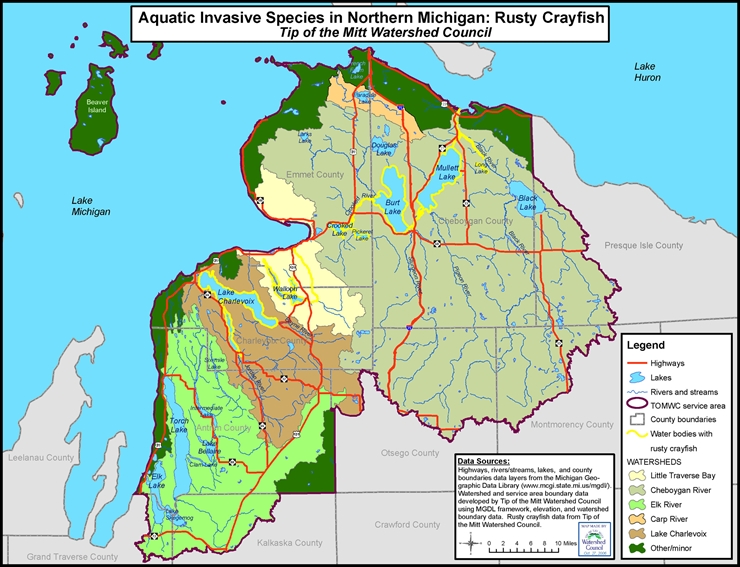*Restricted in Michigan
Overview
Rusty Crayfish are invasive crustaceans spreading to lakes, rivers, and streams in several areas of North America. They are more aggressive than other native crayfish, better able to avoid fish predation, and can harm native fish populations by eating their eggs and young. They can displace native crayfish, hybridize with them, and graze on and eliminate aquatic plants.
Rusty Crayfish have likely spread through bait bucket release by anglers, aquarium release by hobbyists, activities of commercial harvesters, and live study specimen release by teachers and students who buy them from biological supply houses. Females can carry fertilized eggs or a male’s sperm so even the release of a single female could establish a new population. Your help detecting and reporting new infestations is vital to preventing their spread.
Identifying a Rusty Crayfish





Characteristics of the Rusty Crayfish
- Adults generally are 3-5 inches (7-13 cm) long
- Claws larger and smoother than many other crayfish; usually without wart-like white bumps
- Claws with oval gap when closed; no distinct thin slit or notch present
- Learn to identify rusty crayfish
- Inspect and remove aquatic plants and animals from boat, motor, and trailer
- Drain lake or river water from livewell and bilge before leaving access
- Dispose of unwanted live bait and study specimens in the trash
- Never dump live fish or crayfish from one body of water into another
- Report new sightings to Tip of the Mitt Watershed Council at (231) 347-1181 or by e-mail at info@watershedcouncil.org

Reporting Invasive Species – FREE APP The MISIN smartphone app provides a mobile solution for the capture of invasive species field observation data. You can play an important role in the early detection and rapid response to new invasive threats in your area by contributing invasive species observations to the MISIN database.
|




